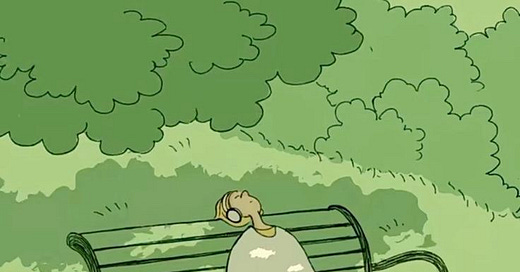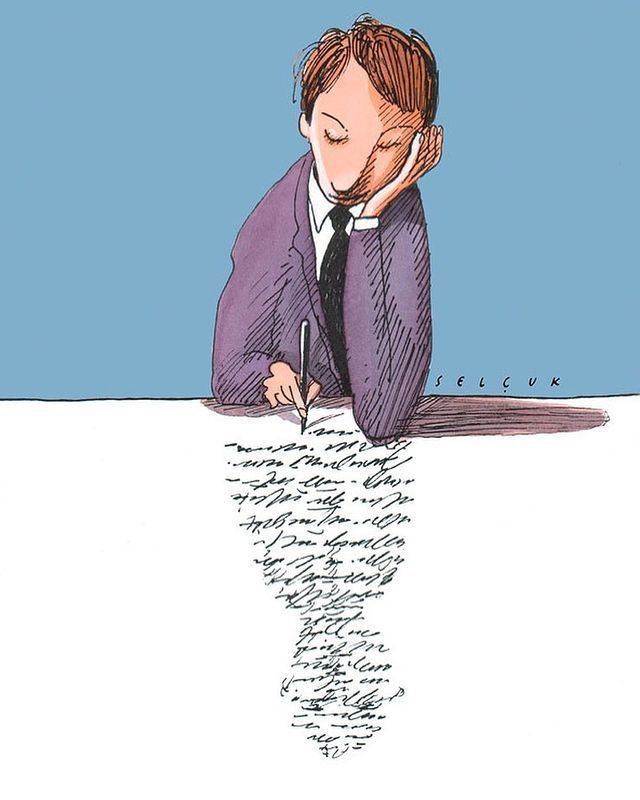Building Your Creative Foundation
The problem isn’t discipline. It’s trying to build a system with someone else’s bones.
A few months ago, I caught myself in a familiar loop.
It was a Sunday night. I had just spent an hour mapping out my “new” content system again. Color-coded, Notion-powered, with all the right buckets: ideas, drafts, edited, scheduled. It looked clean. Efficient. Like something Ali Abdaal might casually scroll through in a YouTube video and say, “This is how I stay consistent.”
But the next morning, I woke up and stared at it like it was someone else’s homework. I didn’t feel inspired. I felt boxed in.
I clicked around aimlessly. Tweaked the fonts. Moved a few cards. And then quietly closed the tab.
I didn’t write anything that day.
This wasn’t the first time it had happened.
I’ve lost count of how many times I’ve tried to “get serious” about my creative process. I’d get a spark of motivation, binge-watch productivity videos, download someone’s free template, and promise myself this time will be different.
I’d convince myself the missing piece was structure. That if I could just find the perfect system, everything would click. My mind would calm down. I’d finally be consistent. Clear. Focused.
But every time I borrowed someone else’s setup, I ended up feeling more lost.
Like I was standing in a room full of other people’s tools, wearing gloves that didn’t fit.
And then came the guilt.
The quiet, familiar voice: You have all the tools. Why can’t you make them work?
That voice is sneaky. It sounds like accountability, but it’s actually shame wearing a productivity hoodie.
I’d sit there refreshing Twitter, scrolling past creators posting their “weekly reflections” and “content dashboards,” wondering how they managed to be so organized, so consistent, so sure of themselves… while I was still trying to write one honest sentence.
But here’s the thing I’ve slowly come to understand:
I wasn’t failing at discipline. I was drowning in comparison.
I was trying to write using someone else’s language. Think using someone else’s rhythm. Create inside someone else’s calendar.
And none of it was mine.
The internet is full of brilliant systems. But when you adopt too many without checking if they fit you, it becomes mental noise. You stop listening to your own instincts. You start treating creativity like an assembly line.
What I’ve come to realize and what I want to share with you is this:
Most of us don’t lack discipline. We lack a system that fits who we really are.
We’re not behind. We’re just building from the outside in when what we need is to build from the inside out.
We’re not struggling because we can’t follow through. We’re struggling because we’ve been trying to wear someone else’s creative glasses and the world looks distorted through them.
And in doing so, we lose the thread of our own creative identity.
We scroll through everyone else’s playbook and forget we’re allowed to write our own.
Let’s call this creative identity overload.
It’s what happens when you collect too many blueprints and forget to build anything of your own.
You try on Ali Abdaal’s morning routine. Mix in Dan Koe’s weekly system. Add in a sprinkle of that minimalist aesthetic you saw on X (formerly Twitter). You stack on content calendars, to-do lists, note apps, and goal planners.
Then you sit down to write… and nothing flows.
You’re not blocked. You’re disoriented.
Like you walked into a room with five voices telling you how to work and none of them are yours.
It’s like trying to wear five pairs of glasses at once and wondering why everything looks blurry.
But this isn’t just about content. It runs deeper than that.
It’s identity confusion.
When you’re constantly switching between other people’s systems, you don’t just lose clarity… you start to lose trust in your own way of thinking. You question every choice. Every process. Every pause. And the quiet part of you that once felt playful or curious starts to shut down.
So here’s the reframe that changed everything for me:
You’re not a machine. You’re an ecosystem.
And ecosystems don’t run on discipline. They run on rhythm.
They respond to light, to seasons, to signals. They thrive when the conditions are right not when you force them to produce.
Your creative mind isn’t lazy. It’s just sensitive. It needs the right soil, the right weather, the right balance between structure and space. And no one else’s system can know exactly what that looks like for you.
When I started seeing myself this way, the pressure eased up. Not because I stopped caring but because I started listening.
I stopped asking:
“What’s the best system to follow?”
“How do I optimize every minute?”
“Why can’t I stay consistent?”
And started asking:
“When do ideas come most naturally to me?”
“When do I feel most clear?”
“What does my creative energy actually feel like?”
That’s when I realized:
Most systems aren’t broken. They’re just mismatched.
They weren’t built for my season of life. My values. My energy patterns. My work style.
They were built by someone else, for someone else.
Trying to fit into them wasn’t discipline. It was self-abandonment.
So I started treating my workflow less like a machine and more like a conversation.
Not a rigid to-do list. Not a perfect calendar. But a quiet back-and-forth between who I am today and who I’m becoming.
Some days that means writing with no plan.
Other days, it means doing nothing on purpose.
Most days, it means checking in before checking off.
This shift didn’t make me “more productive.”
It made me more honest. More present. More alive in my work.
Because I wasn’t chasing clarity… I was creating it.
Not by finding the perfect system. But by finally making space for mine.
Here’s what that shift has looked like for me and how you can start designing your own foundation:
1. Theme your week, not your day.
Your brain isn’t meant to context-switch 5 times before lunch.
Instead of daily to-dos, I started giving my week a rhythm:
Monday: explore (read, research, voice memo ideas)
Tuesday: write (rough messy drafts)
Wednesday: edit (sharpen, cut, clarify)
Thursday: share (publish, engage, reflect)
Friday: reset (review, rest, reorient)
This creates focus without feeling rigid. It gives each type of task its own mental space.
2. Publish before you feel ready.
Perfectionism is just fear in a nicer outfit.
I started treating publishing like showing up to a conversation not a performance.
You don’t rehearse your sentences in a conversation. You just speak. You learn by saying it out loud.
So now I ask: What idea am I curious enough to share today, even if it’s rough?
That’s enough. You’re allowed to share mid-process.
3. Build your system with your energy, not against it.
Stop asking: “What’s the perfect system?”
Start asking: “When do I feel most alive while creating?”
Then build around that.
Are you more focused in the morning or at night?
Do you think best while walking or while typing?
Do ideas come in long chunks or short sparks?
Use your answers. Not someone else’s habits.
4. Anchor your identity, not just your output.
Instead of asking, “What should I post this week?”
I ask, “What kind of creator am I becoming?”
This reframes the work from pressure to process.
You’re not a content machine. You’re a person learning to think in public.
Let the work reflect that.
Here’s your next move:
Pick one tiny habit that feels natural—not aspirational.
Write one messy idea in your notes app each morning.
Share one insight with a friend every Friday.
Record a 30-second voice memo about what’s been on your mind.
Don’t build a fortress. Build a doorway.
And remember:
Inconsistency isn’t failure. It’s exploration.
Every off day, every draft you never post, every system you try and outgrow—that’s part of finding your rhythm.
You’re not behind. You’re building something honest.
Try this for a week.
Let it be simple. Let it be yours.
– Soham
P.S. If this resonated, read my last letter - “Your Voice Is Not an Algorithm”






I love this line: I started treating publishing like showing up to a conversation not a performance.
It resonates a lot with a core belief of mine, that the work we ship should not be seen as a representation of who we are, but as an act of care with someone else. It's a relational dynamic, it's us giving our best to someone, not performing.
“You start treating creativity like an assembly line” oof. Thank you for this article. It truly made me feel SO seen. Here’s to following our own rhythm 🤍✨